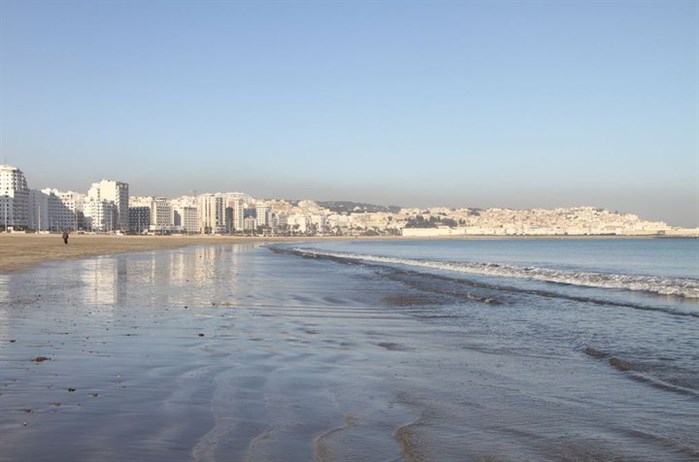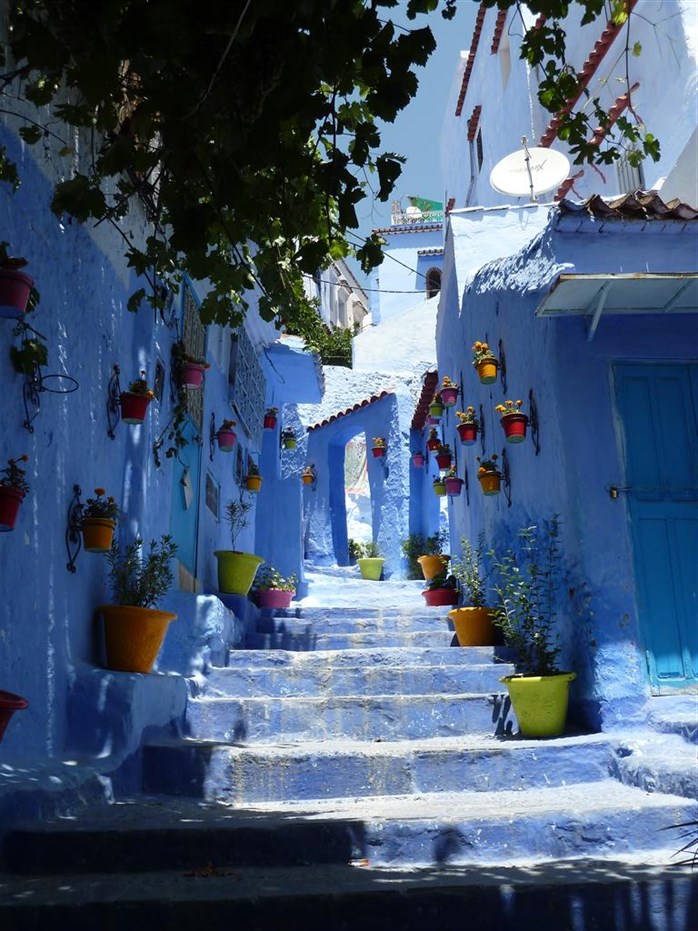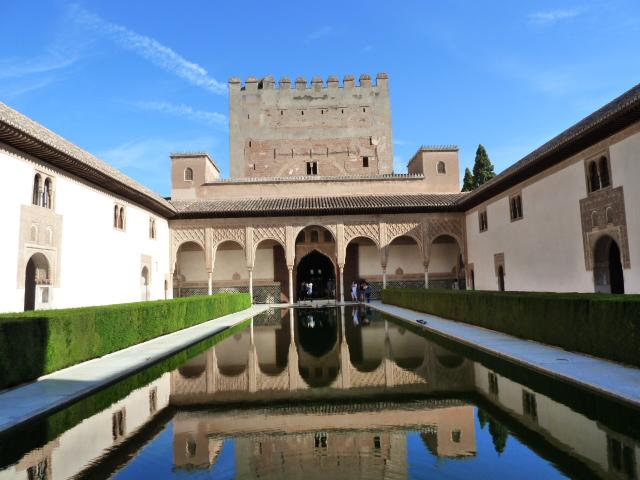Costa del Sol & Morocco 8 days
First day Malaga Airport - Tarifa - Tangier
Arrival at Malaga airport, transfer to Tarifa.
Collecting boarding passes back and forth.
Boarding in Tangier. The ocean breeze caress us when we will spot Tangier. From the deck of the boat appear in all its splendor the profile of the hills of the city, dominated by two high towers: the Mosque of Mohammed V and the Spanish Cathedral. Background, the murmur of the waves, the sound of the muezzin calling to prayer guess, and that is when we feel we have reached our destination, Morocco: the country of the senses.
Arrival to Tangier, transfer to hotel.
Delivery of the rooms.
Dinner at the hotel.

Second day Tangier - Tetouan - Chefchaouen - Tangier
Breakfast at the hotel.
Departure to Chefchaouen.
Chefchaouen, mysterious village, founded as a secret place from which to attack the Portuguese, is installed on the north coast. The entrance to the village was completely banned to Europeans until the arrival of the Spanish troops in 1920.
It is located within a natural reserve of the biosphere. Chefchaouen is a holy town perched on the mountain, and its streets are painted in white and blue. In there you can find kind and friendly people, and it offers also to visitors beautiful urban panoramas in decline, precious samples of local crafts and a peaceful atmosphere, that is difficult to find nowadays.
Guided tour of Chefchaouen
Lunch in Chefchaouen
Departure to Tetouan, which in Arabic means "eyes" or "sources". Sometimes known by the nickname "The White Dove" is a city in northern Morocco, located next to the Mediterranean sea. It was founded in the third century BC, destroyed by the Romans in the first century, and for 200 years the legions used it as a military post. It was not repopulated until 1307 when one of the sultans Merinids decided to build a fortified city on the present site of Tetouan. The city was destroyed in 1339 by the King of Castile and was not occupied again until the sixteenth century by some Jews from Spain. Spanish blocked its port to prevent piracy and entered in a period of decline that did not stop until the time of Moulay Ismail. Spain reconquered it in 1862 maintaining a certain influence in the city until 1913, and returned to occupy the protectorate again. Therefore sometimes it has been said that Tetuan is the most Spanish of Moroccan cities.
Return to Tangier
Dinner in Tangier

Third day Tanger - Torremolinos - Costa del Sol
Breakfast and check out at the hotel.
Guided tour of Tangier
Inhabitants of this city say that Tangier was founded by Antaeus (atlas), son of Neptune and Earth, putting the name of his wife (tingo) or his daughter (Tinga). Antaeus was killed by Hercules, son of Jupiter. His tomb is located on one of the hills surrounding the city, "Hill charf". It is also said that there blooms the "Garden of the Hesperides" where the trees produce fruits of gold.
Although it was abandoned for years, the situation has changed to convert Tangier in a very interesting city to begin to discover Morocco.
It is completely renovated thanks to the current king, because he is strongly committed to the development of northern Morocco. He has also established his summer residence here. Many people speak Spanish, so the language will be for you an advantage. Remember Tangier belonged to Spanish protectorate until 1956.
Lunch in Tangier.
Boarding in Tarifa.
Transfer to Torremolinos.
Check in and dinner at the hotel.
Fourth day - Costa del Sol
Breakfast at the hotel
Day free in Torremolinos to rest.
Possibility of optional excursions to Ronda in the mountains of Malaga.
Dinner at the hotel.
Fifth day - optional excursion to Seville
Breakfast at the hotel
Optional excursion to Seville.
Capital of Andalusia, Seville is a city of monuments of the first magnitude. Roman city, Arabic, medieval, capital of the New World in the Century of Spanish gold, Sevilla collected in every corner inheritance in its history, melting pot of cultures and people. There is a small verse that illustrates very well the ancient history of Seville:
Hercules built me,
Julius Caesar besieged me
Of walls and high towers,
And the Holy King won me
With Garci Perez of Vargas.
Arrival in Seville and tour of the city.
From the bus we see as important buildings like the Plaza de toros de la Maestranza, the Palace of the Dukes of Montpensier, Plaza de America and Plaza of Spain, as well as part of the ancient walls that enclosed the Roman city.
After this pleasant walk, we will cross the Santa Cruz neighborhood, where the old Jewish quarter was based, to enjoy its narrow winding streets, palace houses, orange blossoms, fountains and squares, all that makes this small neighborhood a secluded island within the modern city.
Visit of the Alcazar.
The Alcázar is based on what was once the residence of the Arab caliph, who, with the reconquest by King Ferdinand III in 1248, became a Christian. The Alcázar we will visit today is largely the work of Peter I, who built it in Moorish style in the fourteenth century. Impressive with its patios, tiles, coffered ceilings and plasterworks, it looks like a palace of a thousand and one nights. Its gardens are also an essential part of the visit, with a Renaissance style and an impressive collection of plants and trees from America, fountains and ponds that make this garden a haven of peace.
After the visit we will give free time to eat and organize a lunch in a nearby restaurant.
Visit of the cathedral.
The Cathedral of Seville, is the third largest Catholic world, after St. Peter's in Rome, and St. Paul's in London. It occupies an entire block, and was built in Gothic style. Its interior is impressive with its large columns and high ceilings pointed vaults. It is a place that calls for recollection and surprise by its magnitude. There are numerous side chapels standing out, especially the Chapel of the Virgen de la Antigua, Baptism Chapel, Chapel of the Virgen de los Reyes, and especially the altar with his Choir.
However, what most calls to attention in the Cathedral, which makes it unique, is its tower, the Giralda. Built on the ancient Muslim mosque, the Giralda was the minaret of the mosque, and attached to it we can find the Patio de los Naranjos. It was the ablutions courtyard at the time. La Giralda became Christianized by the add of the body of bells, and the vane that crowns the tower, called Giraldillo, representing Faith. She is reached by a winding road rampant that once leads us to the top, offers a spectacular view of Seville, in all its glory.
After this visit, we will left some time, and at 17.30 hrs we will return to the Costa del Sol.
Dinner at the hotel
Sixth day - optional excursion to Granada
Breakfast at the hotel
Optional excursion to Granada.
Today we will visit Granadathe last bastion of Muslim Spain, until 1492, when the Catholic Monarchs defeated Boabdil, the last Moorish king, after centuries of occupation. Granada is a city heavily influenced by its Arab heritage, both the layout of its streets and in its architecture, landscape, gastronomy, etc. On arrival we will visit the Alhambra. Granada is known worldwide for its most important monument, the Alhambra, which annually receives millions of visitors. This palace consists of several main parts: the Alcazaba, the Palacio de Carlos V, Nazari Palaces and the Generalife gardens, so it is imperative you to visit it.
From the vantage point of the Alhambra, overlooking the whole city, you will enjoy spectacular views of the Albaycín and Carmens. Los Carmenes are landscaped homes, its gardens are terraces are at different heights, creating a unique type of residential house.
At the exit of the Alhambra we descend to the center to visit the historic center. Already in the city center, are included essential monuments such as the Cathedral, Renaissance style and the Chapel of the Catholic Monarchs, where monarchs are buried. The chapel is a jewel of Renaissance, richly ornamental. Near these two buildings we can also visit the Corral del Carbon, old guest rating of Islamic origin and which is preserved today as a cultural center.
Other magnificent palaces and civic buildings will surprise us on our walk, but you have to understand that Granada was during a time the residence of the Catholic Monarchs, home of the Royal Chancery, an important university center, and all of this has contributed to leave to the city a rich artistic heritage.
Free time for lunch.
In the afternoon we can take a walk through the Albaycín and climb to the viewpoint of San Nicolas, from where you have the most beautiful views of the Alhambra. When at sunset the walls of the Palace are stained by pink and the sun is lost in the gardens of the Generalife, Granada will be recorded in our minds as one of the most beautiful places that our eyes will ever contemplate.
Departure back to Torremolinos.
Dinner at the hotel.
Seventh day - optional excursion to Cordoba
Breakfast at the hotel
Optional excursion to Cordoba.
Today we will visit Córdoba, capital of Omaya caliphate. The Guadalquivir river (Oued el Kevir or riogrande, like it was called by the Arabs), bathes the Caliphate city, refreshing the hot summer afternoons, dotting the banks and giving impetus to the mills that even today remain on its shores, reminding to us the past times.
Cordoba was the capital of the world in the tenth century Culturally speaking, under the rule of the Omeyas, was built here a powerful city, adorned with palaces, mosques, madrassas and libraries. Cradle of great men and symbol of coexistence of three cultures (Arab, Jewish and Christian), Córdoba figures bequeathed to history as Maimonides, Seneca and Averroes.
Arrival in Cordoba. At the monument to San Rafael, landlord of the city, we will descend to cross the bridge and move towards the mosque. The Mosque of Cordoba, is one of the most important monuments of Islamic architecture in the world. Built over several periods between centuries VIII to X, it presents a great architectural richness with its forest of columns and capitals, and the idiosyncratic polychrome red and white of its arches, without forgetting the incredible Mihrab, with a coffered surprisingly beautiful and wonderful Byzantine mosaic decoration. In the Catholic Cathedral, right in the center of the old mosque, was the place of worship and was incorporated respecting the rest of the building to the glory of the coming generations.
After this visit, we will continue walking through the Jewish quarter, the largest in Spain, with its typical courtyards, fountains and geraniums, to go visit the Synagogue of small proportions but with a richly decorated interior.
Free time for eat
Visit of the Alcazar of Catholic Kings. This fortress palace, built in the fifteenth century, brings together in its interior rooms of great interest, although the best of the palace are its gardens in staircase, a haven of peace where every summer music festivals are celebrated outdoors.
Departure back to Torremolinos.
Dinner at the hotel.
Eighth day - Transfer to Malaga airport
Breakfast at the hotel
At the hour programmed transfer to the airport
End of our services
Length
8 days / 7 nights
Terms and conditions
- Included:
- Private transport for the whole itinerary
- Fast Ferry Tarifa Tangier go and return
- Moroccan national guide in Morocco
- Local guides in Chaouen, Tetuan and Tangier
- 2 lunches in Morocco
- 2 nights in 3 * hotel in Tangier (Morocco) in half board
- 5 nights in 4 * hotel in Torremolinos (Costa del Sol) in half board
- 1 Free space in a room for every 10 bookings


Additional Information
N/D